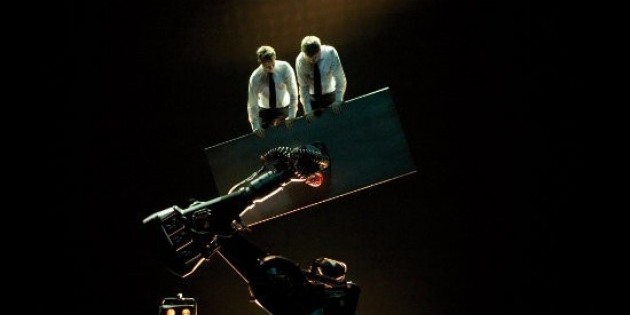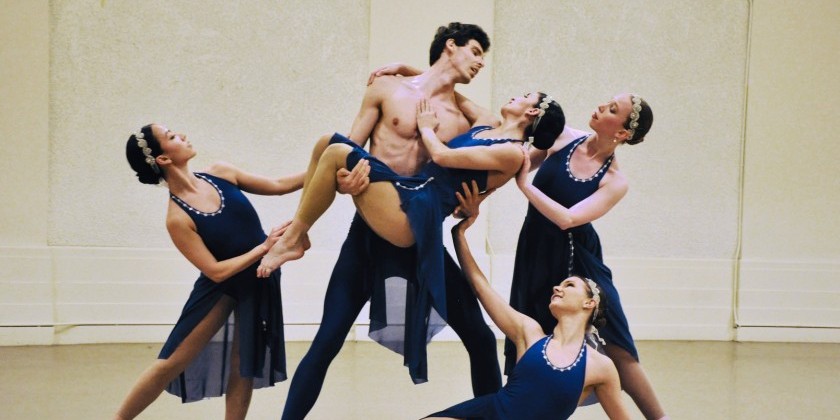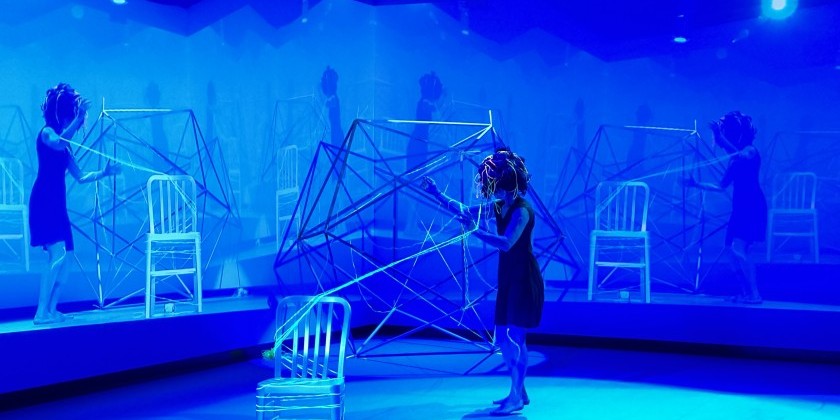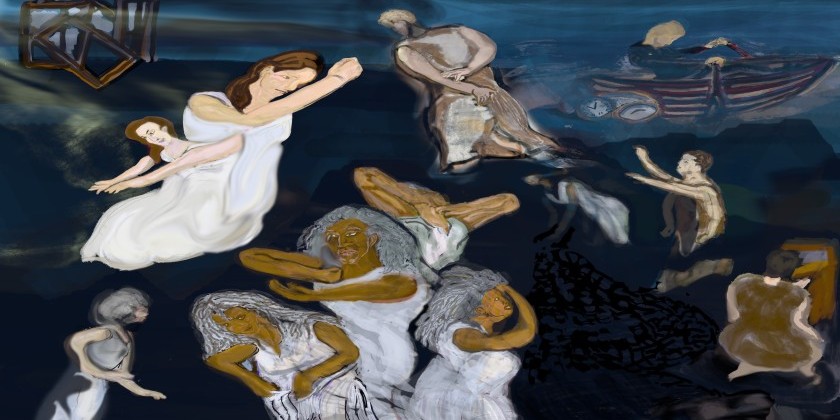AUDIENCE REVIEW: Compagnie 111

Company:
Compagnie 111
Performance Date:
February 23 - March 6, 2010
Company
Compagnie 111
Show / Event Name
"Sans Objet"
Performance Date
February 23 - March 6, 2010
Venue / Location
Les Abesses, Paris
Your Occupation:
creative artist, director, teacher, writer, dancer, movement artist, performer, student, human being
Last time you moved your body:
this morning
Have you ever seen this company/ before?
Tell us a bit about your history with this group/performer?
A theatre-going friend mentioned this group to me three years ago, and I have seen them every time they come into Paris since then. I think New Yorkers would be delighted to see this group! Especially this recent work, "Sans Objet" or an earlier one title "Plus ou moins infini" -- and it is for this reason I share this review of their work here.
Describe as plainly and as specifically as you can what you actually saw. We are going for description without judgement.
There is no need for complete sentences, phrases and word lists are fine. You can describe these elements or anything you can think of: the artists, the kinds of movement, the qualities of the movement, the use of the stage/space, the musicality/timing...
It doesn't seem far-fetched to imagine that the inspiration for Aurélian Bory's "Sans objet", performed by Compagnie 111 in Paris on Théâtre de la Ville's program at Les Abbesses last night, had something to do with their being situated in the heart of one of France's industrial centers for aviation and car manufacturing. I say this because the principal player in this full length trio is an enormous robot, which I presume initially functioned in the assembly line of a car manufacturing facility in the region.
Removed from this context and placed on a platform in a theatre with two men in black suits, the robot is without the objects it was created to manipulate (massive sheets of heavy metal come to mind). Detached in this way from its intended function, one could also say that it is without purpose as well. But one could not say that it is without personality. Or power.
In the beginning, the lights reveal (and create the exquisite illusion of) an immense shining sculpture. It's lines are fluid curves and arcs, in the way that fabric falls. And as it slowly moves, gracefully flowing and transforming from one shape to another like an enormous giant made of liquid mercury, there is a harsh and heavy sound that pops unexpectedly. And the lights play in almost every possible way with this moving form, revealing its beauty and grace through the gradations of shadow and color and light.
The revelation that what we are looking at is in fact an enormous black plastic material (that reminds me strongly of garbage can liners) draped over a giant machine is a shock that is delivered slowly. How could anyone see such beauty in a black plastic coated form? And how could we have overlooked for so long the beauty of how the light plays on its mundane-seeming surface?
Even when bared, the lighting still angles in on the thing in such a way that it is not revealed as a hideous or heartless mechanism at all, but rather as a creature of infinite sculptural beauty and possibility. It is only when one of the performers puts his head into the "head" or "mouth" or "hand" of the thing, and is manipulated through the surrounding space, that we might realize that this robot is essentially one great appendage. And the machine has found an object! Which doesn't deny the fact that great care, seeming almost like tenderness, is given to the manipulation of this new found object.
And then the two performers ride on the thing. A flying dragon is called to mind, or a slow and heavy circus ride. But it is not in service to these humans in any way -- they must adjust and adapt to it. And they do so with a simplicity and functionality that demands what seems to be inhuman and impossible strength. Riding a slow and giant arc through the air, they begin in one position (say, for example, the shape of a "Y," with two arms and the top of the head connecting to the robot's arm and the body creating the base of a "Y") and maintain it without the slightest visible shift as they float sideways, rotate, and transition upside down on the other side.
I wonder what it's name is. I can't imagine the creators and performers, nor its pilot, having spent so much time working so intimately with it that they haven't given it a name. Well, "It" begins to manipulate the planks that make its platform. As one of the men walks across, the robot shifts and slides the planks out from under his feet, and the humor is very welcome. As it is welcome in the section where the robot manipulates a large, shallow box in which the two men keep adjusting themselves to the changing gravity of the situation.
By the end the men have covered their heads in black plastic, and one of them pulls out another huge sheet of this black plastic, which is pulled across the entire stage like a curtain, hiding the machine and the men. And the light shining on it now, as it is thumped and banged on from behind, creates moving waves of amber light in the blackness of deep space. And the strikes come faster and smaller and more densely packed, like a meteor shower. And the light dances frantically in space. Not because the light is moving frantically, but because the surface it falls upon is. The light is, in fact, steady. And the music, everywhere enhancing the textures of the work, here gives it a quality of desperation and lawlessness that is frightening. And when light shines from behind it, hundreds of holes are revealed, like stars in the night sky.
And two lines are sliced vertically, and the two men walk through with their heads still covered in black -- and against the blackness of the space they seem headless. And they stand one on each side of the rectangular hole that has been formed, doorway-like, between those two vertical lines, like ancient hybrid creatures guarding an Egyptian tomb. And as the piece finishes, for me, it seems very much like a black hole in space, sucking in all.
I would like to reprint here the notes on the entire team of artists, because clearly the vision of this work was realized through their work together:
Conception, script and direction - Aurélion Bory
Music composition - Joan Cambon
Artistic Advisor - Pierre Rigal
Lighting - Arno Veyrat
Pilot and programmer for the robot - Tristan Baudoin
Scenery - Pierre Dequivre
Sound - Stéphane Ley
Costumes - Sylvie Marcucci
Prop Monitor - Fréderic Stoll
Patina/Sheen - Isadora de Ratuld
Masks - Guillermo Fernandez
Performed by Olivier Alenda, Olivier Boyer
Voila!
-- Ann Moradian
www.annmoradian-perspectives.blogspot.com
www.affinitiz.com/space/perspectivesinmotion











